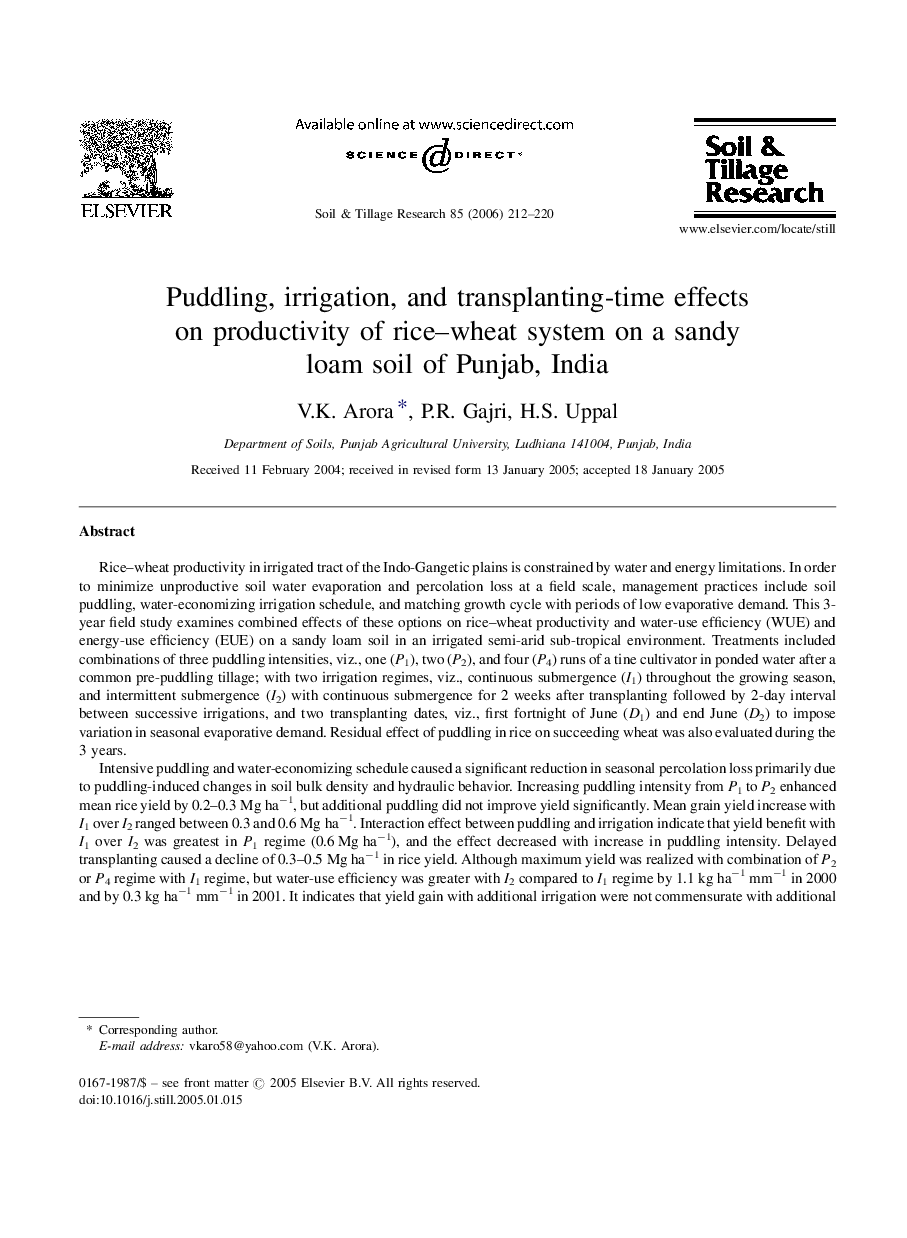| کد مقاله | کد نشریه | سال انتشار | مقاله انگلیسی | نسخه تمام متن |
|---|---|---|---|---|
| 306937 | 513125 | 2006 | 9 صفحه PDF | دانلود رایگان |

Rice–wheat productivity in irrigated tract of the Indo-Gangetic plains is constrained by water and energy limitations. In order to minimize unproductive soil water evaporation and percolation loss at a field scale, management practices include soil puddling, water-economizing irrigation schedule, and matching growth cycle with periods of low evaporative demand. This 3-year field study examines combined effects of these options on rice–wheat productivity and water-use efficiency (WUE) and energy-use efficiency (EUE) on a sandy loam soil in an irrigated semi-arid sub-tropical environment. Treatments included combinations of three puddling intensities, viz., one (P1), two (P2), and four (P4) runs of a tine cultivator in ponded water after a common pre-puddling tillage; with two irrigation regimes, viz., continuous submergence (I1) throughout the growing season, and intermittent submergence (I2) with continuous submergence for 2 weeks after transplanting followed by 2-day interval between successive irrigations, and two transplanting dates, viz., first fortnight of June (D1) and end June (D2) to impose variation in seasonal evaporative demand. Residual effect of puddling in rice on succeeding wheat was also evaluated during the 3 years.Intensive puddling and water-economizing schedule caused a significant reduction in seasonal percolation loss primarily due to puddling-induced changes in soil bulk density and hydraulic behavior. Increasing puddling intensity from P1 to P2 enhanced mean rice yield by 0.2–0.3 Mg ha−1, but additional puddling did not improve yield significantly. Mean grain yield increase with I1 over I2 ranged between 0.3 and 0.6 Mg ha−1. Interaction effect between puddling and irrigation indicate that yield benefit with I1 over I2 was greatest in P1 regime (0.6 Mg ha−1), and the effect decreased with increase in puddling intensity. Delayed transplanting caused a decline of 0.3–0.5 Mg ha−1 in rice yield. Although maximum yield was realized with combination of P2 or P4 regime with I1 regime, but water-use efficiency was greater with I2 compared to I1 regime by 1.1 kg ha−1 mm−1 in 2000 and by 0.3 kg ha−1 mm−1 in 2001. It indicates that yield gain with additional irrigation were not commensurate with additional water input. Energy analysis also showed that energy-use efficiency was 6.8, 7.2, and 6.6 kg kWh−1 for P1, P2, and P4 regimes suggesting that yield gain with P4 did not match energy input for additional puddling. Further, there was a greater risk of yield reduction of succeeding wheat with P4 (by 0.2–0.3 Mg ha−1) compared to P1 or P2 regime.
Journal: Soil and Tillage Research - Volume 85, Issues 1–2, January 2006, Pages 212–220